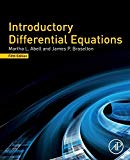
Concept explainers
To find: The displacement of the object whose weight is
Answer to Problem 1RE
The displacement of the object is
Explanation of Solution
Procedure used:
According to Hooke’s law, a restoring force get generated in the spring if the spring is stretched a distance
That is,
The mass of the object is determined by the formula,
Calculation:
Since, the object weighs is
Thus, the value of spring constant
The object weighs is
The initial value problem that models this situation is given by the following equation.
Substitute the values of
Since, at
Thus, initial position
The characteristic equation of equation
The solutions to the characteristic equation are as follows.
So, the general solution of
Differentiate
Substitute
Thus,
From
Thus,
Therefore the solution of the equation
Thus, the maximum value
The object will return to the equilibrium position when
Thus, the time required for the object to return to the equilibrium position is
The time period of the spring-mass system is given by,
Substitute
Therefore, the object returns to the equilibrium position after every
Want to see more full solutions like this?
Chapter 5 Solutions
Introductory Differential Equations
 Discrete Mathematics and Its Applications ( 8th I...MathISBN:9781259676512Author:Kenneth H RosenPublisher:McGraw-Hill Education
Discrete Mathematics and Its Applications ( 8th I...MathISBN:9781259676512Author:Kenneth H RosenPublisher:McGraw-Hill Education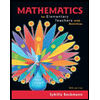 Mathematics for Elementary Teachers with Activiti...MathISBN:9780134392790Author:Beckmann, SybillaPublisher:PEARSON
Mathematics for Elementary Teachers with Activiti...MathISBN:9780134392790Author:Beckmann, SybillaPublisher:PEARSON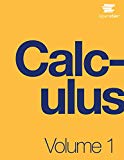
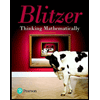 Thinking Mathematically (7th Edition)MathISBN:9780134683713Author:Robert F. BlitzerPublisher:PEARSON
Thinking Mathematically (7th Edition)MathISBN:9780134683713Author:Robert F. BlitzerPublisher:PEARSON Discrete Mathematics With ApplicationsMathISBN:9781337694193Author:EPP, Susanna S.Publisher:Cengage Learning,
Discrete Mathematics With ApplicationsMathISBN:9781337694193Author:EPP, Susanna S.Publisher:Cengage Learning,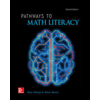 Pathways To Math Literacy (looseleaf)MathISBN:9781259985607Author:David Sobecki Professor, Brian A. MercerPublisher:McGraw-Hill Education
Pathways To Math Literacy (looseleaf)MathISBN:9781259985607Author:David Sobecki Professor, Brian A. MercerPublisher:McGraw-Hill Education





